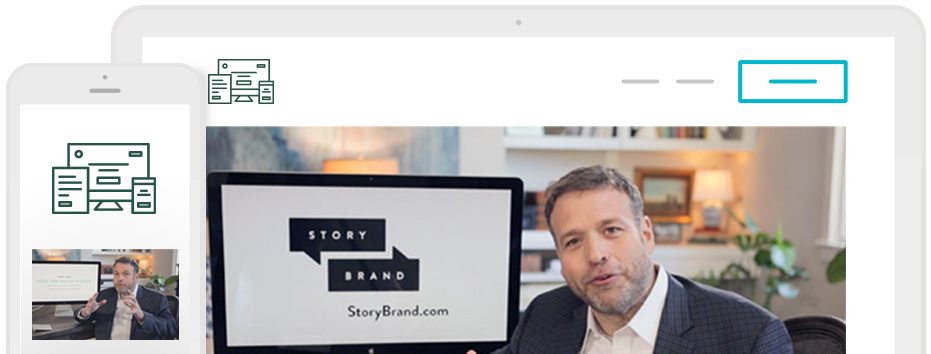
I read this quote from master copywriter Ray Edwards the other day and haven’t been able to stop thinking about it:
Prospects never read anything at first; they never believe anything at first; and they never buy anything at first.
Sit with that one for a moment.
Basically, Ray is reminding us that people need to trust us before they can do business with us. 
And the research shows that trust is indeed good for business: this study found that countries with a higher proportion of people deemed trustworthy tend to be wealthier. The trust creates more business transactions, which boosts the overall economy.
So if your business isn’t growing the way you think it should, your marketing may not be making an emotional connection with your leads and customers.
But how do you build trust in your marketing? Here are five strategies you can use in your communication to strengthen the connection you make with your prospects. Try these out, and soon your customers really will read more, believe more, and buy more.
Empathize with their problems.
People are not coming to your website for fun. They’re coming to solve a specific (and often painful) problem.
- Their living room decor is dated, and they need help redesigning it so they can stop feeling embarrassed when friends come over.
- Their house has been on the market for six months and they are desperate for someone to help them sell it so they can move on with their life.
- They’ve spent all this money on a fancy DSLR camera and they would love someone to teach them how it works, so they can stop taking terrible pictures with their smartphone.
To build trust, you’ve got to explicitly show your customers that you get it. You understand what hurts (and how to fix it).
How? First, stop assuming you know what their issues are and start talking to your people.
Survey your new customers to ask where they’re struggling and why they came to you.
Host focus groups and hear from your prospects about what problems they’re trying to overcome in everyday life.
Listen to the language your customers use to describe their problems. Borrow it in your marketing copy.
This is going to give you deep and abiding empathy for your customers. That’s powerful, as the great Stephen Covey reminds us:
“When you show deep empathy toward others, their defensive energy goes down, and positive energy replaces it.”
Show people you truly understand and feel their problems, and you’ll find your prospects are much more receptive to how you can solve it.
Give away something of value
Empathy will get your customers’ attention.
Generosity is how you’ll keep it.
Offer anyone who comes to your site something of value in exchange for their email address. It could be downloadable content or a brief but value-packed consultation.
But here’s the trick to getting this right:
It should cost you something.
In fact, that’s critical. This Pardot study found that 71% of B2B customers have been disappointed with the content they received from a business, and a quarter of those people said they would never read future content from that business as a result.
So give away something you could realistically charge for. The fact that you’re not charging for it is what earns you the trust of your reader.
As you keep sharing helpful content, you become a reliable authority in your customers’ eyes. When it’s time to purchase, you better believe they’re going to start with the business they already know and love.
We go into a lot more detail about building trust with content in my interview with Brian Clark of Copyblogger.
Showcase your authority through testimonials
You walk into a plastic surgeon’s office and say, “I want a smaller nose. Can you show me some before and after pictures of nose reduction surgeries you’ve done?”
“Sure,” the doctor says, and pulls out a portfolio.
Now, I am not a medical expert. But I can tell you, the thinner that portfolio is, the faster I am running out the door.
You going to trust the doctor who’s helped a lot of other faces before she touches yours.
To trust you, your customers need to see the same evidence of your past success. And there’s no better way to do that than by featuring your happy customers. A few tips:
- Use video. Nothing is more powerful than someone speaking directly to the camera and sharing how you’ve helped them.
- Be as real as possible. Use candid images of your customers (not studio headshots), show before and after photos, and always get permission to show their real name.
- Focus on transformation. Encourage your testimonial giver to talk about their transformation. A lot of your customers will praise your business or your customer service, but go deeper. Ask them about what life was like before they hired you and how it’s better now.
Express your personality.
We talk about trust in marketing. But trust is essentially a belief — and beliefs are always personal.
So be personal!
A lot of people think that being professional and trustworthy means being stiff and dry. Not so. Whether you’re a solopreneur or or an enterprise-level corporation, let your humanity shine in your marketing. Write with warmth and honesty. Use images of yourself and your staff. It’s okay to show your personality and your passion. It’ll go a long way toward fostering great rapport between you and your customers.
Listen to your customers
People won’t trust your business if they sense, even without realizing it, that there’s a wall up between you.
That’s why it’s critical to listen to your customers.
Of course, listening to your customers probably sounds like the most obvious thing in the world. In fact, you probably think you’re already doing it.
But these days, they’re talking to us in so many different ways.
For example, when you send that survey we talked about earlier, you also need to review and read the responses.
You’ve got to do your best to engage personally when people mention your brand on social media.
It means paying attention in day-to-day customer interactions, too. In my conversation with David Salyers of Chick-fil-A a few weeks ago, he told me one of their next ideas came straight from an operator who was watching a mom with her kids in the car:
An operator noticed one day that for a mom with kids in the car, there’s a lot of pain in terms of having to come in, stand in line, order while the kids are, you know, find a seat, all that stuff. One of the operators said, “What about it we created a mom valet? You come through the drive-through, place the order, and then go sit down [inside] and the food is ready for you.”
And of course, in addition to telling you what they think, your customers are also showing you what they think by their actions. Consider your email and web analytics. Those numbers are your customers talking back to you, showing you exactly what content is relevant, what emails aren’t working, what search terms they’re using.
Remember, trust isn’t just about what you say in your messaging. It’s about how you listen and respond, too.
—
Building trust is going to make selling so much easier. So if your business isn’t where you’d like it to be, try these strategies. They won’t work overnight (because trust doesn’t work that way, either), but they will make an impact in your bottom line.

FREE VIDEO SERIES: 5 Minute Marketing Makeover
One of the best ways to scale up your business is to clarify your message so your customers can hear you. We at StoryBrand know how busy you are, so we’ve developed a few free marketing videos that will only take 5 minutes of your time. Donald Miller first explains why customers aren’t buying. Then, he teaches you 5 ways to sharpen your sales message. Finally, he walks you through a website that works so you understand how to better your own website. Click here to stop losing money because your message isn’t clear. Discover why your website isn’t creating sales. Tune in for 3 vital lessons that will help you stand out from the competition and grow your business.









